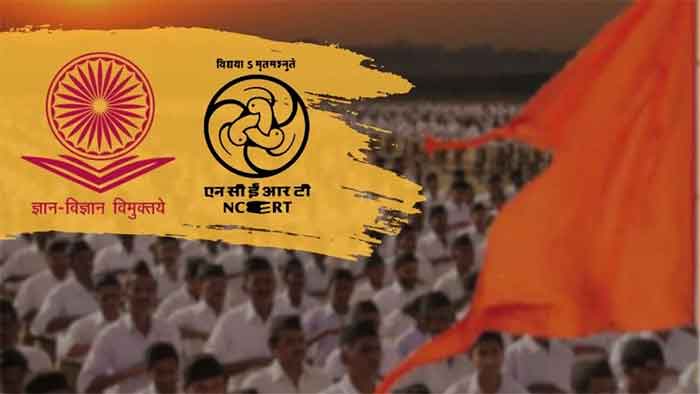
During this pandemic period, virtuality has taken over many facets of our life and especially education although it could be a temporary phase. But the academic world may be realizing the immense potential as well as drawbacks of the virtual medium in the ‘give and take’ process of education. It is a near certainty that the hardest hit is pre-primary and primary education. This stage is especially and extremely important because the fundamental societal integration and socialization take place in such schools. Sudden envelopment of virtuality has raised questions of access and mismatch between the young mind and the teacher although on a positive note, new possibilities of transfer of knowledge and learning are also being realized. There are other realizations which have daunted many people. These realizations include the emergence of an insecurity feeling regarding life, wellbeing and even freedom with revelations of the grinding truth that dollars and development may falter before a virus measuring 80 billionths of a meter in diameter. But let us read beyond the negativities and take the possibilities forward especially in the context of higher education.
There are certain areas in higher education such as science, engineering and medicine where online possibilities may work only in a limited way as exposure and experience with the contexts are important for the learning process. However, large number of humanities, social sciences and health science fields including public health can experiment with new strategies for pedagogy. My own discipline of Public health is sometimes categorised as part of allied health sciences in some universities. However, this categorisation is more out of convenience and may not reflect the philosophy and orientation of public health. In many well-known international universities, public health has an independent status borne out of the realization that it is an interdisciplinary area which requires considerable inputs from social sciences and therefore it cannot be just called as an allied health science. In the present context of the pandemic, this is ever more justified.
For a long time, Public Health as a discipline was influenced by a community medicine orientation especially in India. However, many international as well as some national universities due to their philosophical orientation could change this to some extent. In India, community medicine meant a ‘particular text book’ and nothing beyond it. Public Health inherited this trend during the formative years. In many other academic programs as well, text book orientation was dominant as passing the examination by answering some predictable questions with point by point answers was the only objective. Closely linked to this text book orientation is the craze for publications in the so-called respectable journals with various citation indices displayed prominently to attract ‘customers’. Although publication business thrived especially after the new trend of open source publishing started where the authors are charged heavily even by renowned publications. And now, in order to subvert the financial burden, scholars have started including publication expenses as a new head in their budget. There is also an unbelievable craze for publications among scholars which might give them promotions and higher status and this is also linked to the institutional ratings in some US universities. Peer review (there are varieties of it) is another so-called standard set by the academic world although one never knows what goes behind the scene. Added to this is the criteria of at least two publications for the PhD theses to get approved. It is indeed a complex scenario!
What I wanted to convey through this long and winding introduction is to drive home the point which many other have also noted that this is the new world of knowledge capitalism where knowledge has become another commodity. However, without being too much carried away by the disturbing nuances of knowledge industry, one can take a nonchalant position of infusing some form of freshness into the process of shaping the mind in the current scenario. It is indeed a reality that a different set of possibilities have emerged at the moment without compromising scholastic standards at least in the higher education.
Text books, journals and to some extent other academic books are important channels for knowledge transfer. So much has been already written about the politics of text book recommendations for school education. In higher education, text books are considered as an easy way out to pass the examination but the truth is that some of these text books are never refereed by any peer review process! And the knowledge that is contained in those text books are used for teaching and even for evaluation. In recent years, the text bookishness has been replaced to some extent by googling where even students’ doubts are cleared through the site. The reason for referring to the craze for journal publications is because such published sources are never or cannot be used (due to rigidity) in teaching as creative teaching has disappeared from higher education. The so-called ‘syllabi syndrome’ has taken over much of the spaces in knowledge transference. I am tempted to ask the question why as academics we publish in the so-called high-index refereed journals which are only used as citations. And most of these publications I am sure give a temporary feeling of achievement or elation and are forgotten even by the authors thereafter.
Creative teaching is a new possibility that has emerged as a result of virtuality. It is important to go beyond syllabi and text books and through the new world of virtual medium of pedagogy, such possibilities need to be exploited and experimented. Referring to one’s publications and experiences in relating to the listed themes need not be considered as blasphemy of the so-called text book or self-praise. Along with this, there is also an effort to understand hues and views surrounding specific themes and subjects. Currently, this is an unknown practice in many universities. This was and is a common practice among many international centres of knowledge during the classical period and even now where the faculties are in constant engagement with the learner. What I wanted to emphasize through this short piece is that this is the time to experiment with new ways of learning. Many others might have stated this earlier (I did not google to find out) but I wanted to restate this again.
Kesavan Rajasekharan Nayar is Chief Fellow, Santhigiri Research Foundation
Principal, Global Institute of Public Health, Thiruvananthapuram
SIGN UP FOR COUNTERCURRENTS DAILY NEWSLETTER

















































